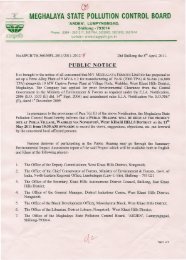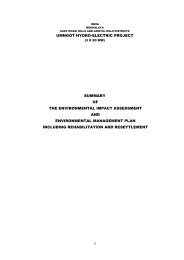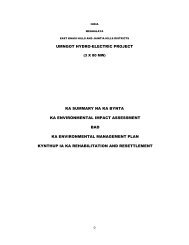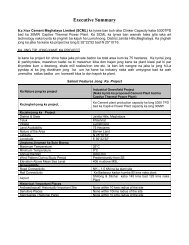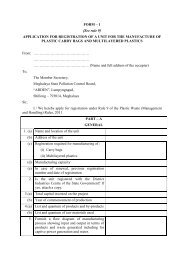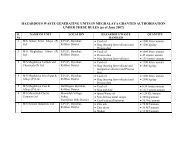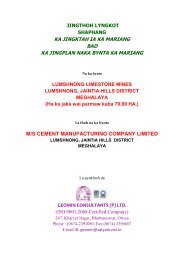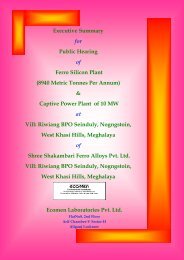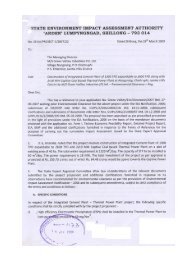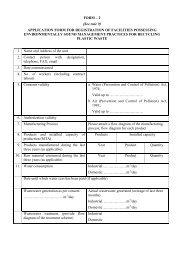chapter - 1 introduction - Meghalaya State Pollution Control Board
chapter - 1 introduction - Meghalaya State Pollution Control Board
chapter - 1 introduction - Meghalaya State Pollution Control Board
You also want an ePaper? Increase the reach of your titles
YUMPU automatically turns print PDFs into web optimized ePapers that Google loves.
Hills Cement Co. Limited.<br />
Dispersion Parameters<br />
Dispersion parameters and for open country conditions (Briggs, 1974) are<br />
used as the project is located on a flat terrain in a rural area. Atmospheric<br />
dispersion coefficients vary with downwind distance (x) from emission<br />
sources for different atmospheric stability conditions. (CPCB –<br />
PROBES/70/1997-98)<br />
Mixing Height<br />
As site specific mixing heights were not available, mixing heights based on<br />
CPCB publication, “SPATIAL DISTRIBUTION OF HOURLY MIXING DEPTH<br />
OVER INDIAN REGION”, PROBES/88/2002-03 has been considered for<br />
Industrial Source Complex model to establish the worst case scenario.<br />
Meteorological Data<br />
Data recorded at the continuous weather monitoring station on wind speed,<br />
direction, and temperature for the monitoring period was used as<br />
meteorological input.<br />
In the present case model simulations have been carried using the triple joint<br />
frequency data. Short-term simulations were carried to estimate<br />
concentrations at the receptors to obtain an optimum description of variations<br />
in concentrations over the site in 20-km radius covering 16 directions.<br />
The incremental concentrations are estimated for the monitoring period. For<br />
each time scale, i.e. for 24 hr (short term) the model computes the highest<br />
concentrations observed during the period over all the measurement points.<br />
The maximum incremental GLCs due to the proposed cement plant, and<br />
captive thermal power projects together for SPM, SO 2 and NOx are<br />
superimposed on the maximum baseline SPM, SO 2 and NOx concentrations<br />
recorded at the monitoring locations during the field monitoring period winter<br />
2007-2008. The incremental concentration due to operation of thermal power<br />
plant, cement plant and their combined cumulative concentrations (baseline +<br />
incremental) after implementation are tabulated below in Table- 4.1, Table<br />
4.2 and Table 4.3 respectively. The maximum GLCs for SPM, SO 2 and NOx<br />
after implementation of the proposed project are likely to be within the<br />
prescribed NAAQ standards for Rural and Residential areas.<br />
<strong>Pollution</strong> <strong>Control</strong> Consultants (India) Pvt. Ltd. 87



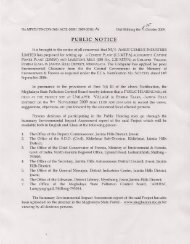
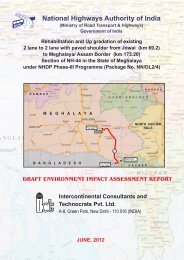

![[FORM I] - Meghalaya State Pollution Control Board](https://img.yumpu.com/49771786/1/190x245/form-i-meghalaya-state-pollution-control-board.jpg?quality=85)

